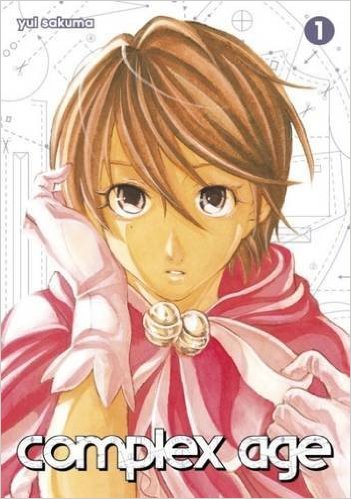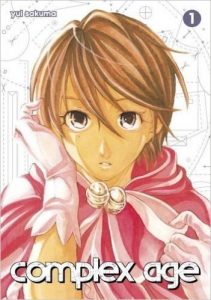By Yui Sakuma. Released in Japan by Kodansha, serialized in the magazine Morning. Released in North America by Kodansha Comics.
The genres that make up the Japanese manga industry have been becoming more fluid over the last few years, and there are titles and even entire magazines that don’t quite fit the label. That said, I still try to always put where the manga first came out in my reviews, both as a helpful reference and because it can be useful to see if you’re going to like something. Jump shonen titles are very different from Magazine shonen titles, and both of those are equally different from a Sunday title. A title that runs in Betsucomi is probably never going to fly in Hana to Yume. With seinen and josei it’s a bit less regimented, but you still see it. All of which is a fairly long preface to explain that I was rather surprised to see that Complex Age ran in Weekly Morning, a seinen magazine, rather than the josei magazine Be Love, where I would have expected it.
Complex Age stars Nagisa, a mid-twenties OL who also has a hobby of cosplay that takes up most of her time and money. She creates the costumes herself, and goes to show them off at the latest Comiket and other such events, along with her friend Kimiko. Her obsession is a long-running magical girl series that isn’t quite PreCure, but it’s close enough for jazz. She is, however, running into several problems. She still is trying to keep her cosplay a secret from her office life, particularly as some of her coworkers seem like the sort who would use it against her; another, younger girl comes along and looks absolutely perfect for the role that Nagisa is cosplaying herself; and Nagisa is getting to the age where it’s harder and harder to realistically play a 14-year-old magical girl. She’s also really tall, which also doesn’t help. This culminates in someone at the even calling her a “giant old lady”, causing her to snap and have a bit of an emotional breakdown.
I’m trying to think of a better way to say it, but I can’t: this is a very good series. The characters all have a depth and nuance that takes them beyond a level where I would normally expect them to stay. Nagisa’s friend Kimiko in particular amazed me. At first I thought that she might be setting up Nagisa for a horrible fall, and couldn’t imagine why, given they’re best friends, but it turned out to be – pardon the term – far more complex than that. As for Nagisa herself, after the beginning emotional turmoil, she actually proves to be far more mature than you’d expect, helping her new protege even as she inwardly writhes. And while new protege may look the part, there’s a lot more to cosplay than just looking right. The manga shows that cosplay can be a money-sucking hobby, but it never belittles it. And there’s a nasty cliffhanger that immediately makes me want to get the next book.
There’s a one-shot at the end of this volume that was the basis of the ongoing series, and it won an award. It’s quite different, showing a married woman as opposed to Nagisa’s OL, and seems a lot starker, ending in a literal bonfire where she cuts off her old cosplay life and moves on. It was well-told, but I preferred the ongoing tale, and I hope that Nagisa can find an ending that allows her to not be completely cut off from what she loves.

